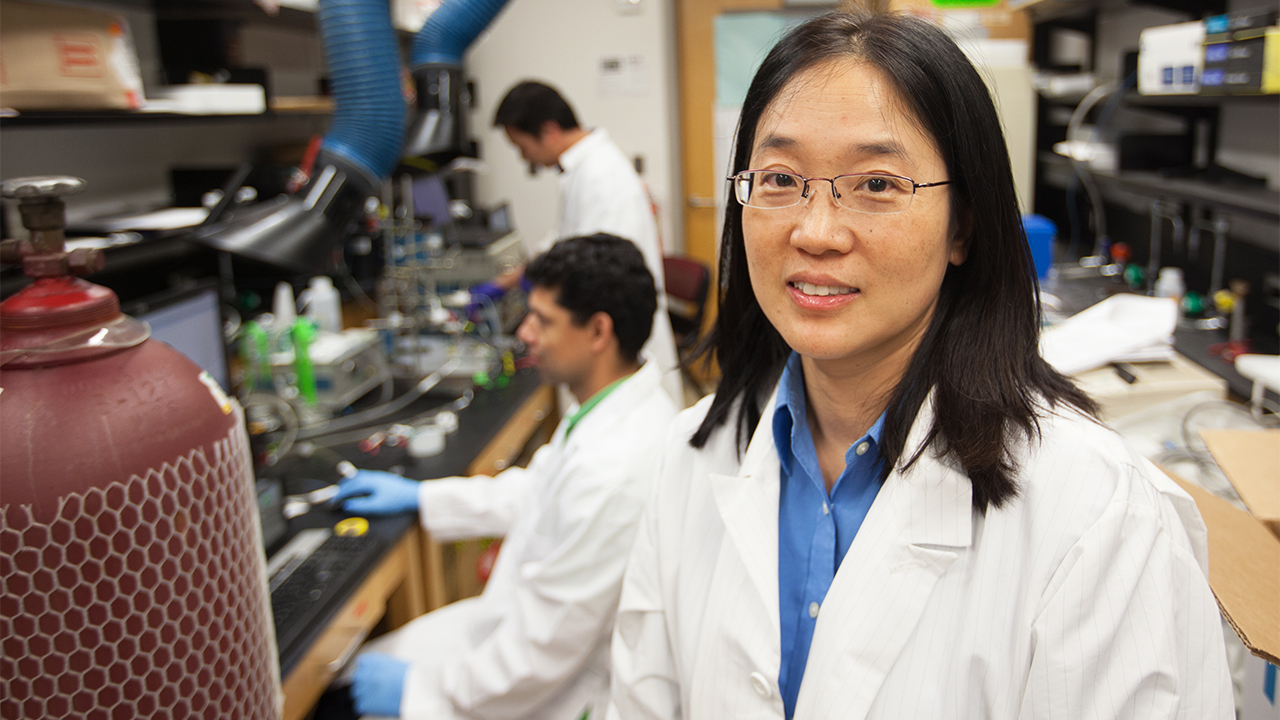A ‘Big Idea’
OU professors get NSF grant for collaborative project to develop Arctic soil emissions sensor

The National Science Foundation (NSF) has made a two-year, $294,536 award to two Oakland University chemistry faculty, Professor Xiangqun Zeng and Assistant Professor Ziming Yang for the development of a low-cost, low-power multimodal sensor that will help researchers address the challenges of measuring carbon dioxide and methane emissions across the Arctic soil over time, as well as their environmental and economic impacts on planet Earth.
In 2016, NSF announced its “10 Big Ideas” — bold, long-term research and process ideas that identify areas for future investment at the frontiers of science and engineering. One of those ideas is “Navigating the New Arctic,” which this project ties into because it helps to address the need to “establish an observing network of mobile and fixed platforms and tools across the Arctic to document and understand the Arctic’s rapid biological, physical and social changes.”
 |
| Dr. Ziming Yang |
Dr. Zeng, a professor of analytical chemistry at OU, will serve as principal investigator on the project, while Dr. Yang, an assistant professor of environmental chemistry at OU, and Dr. Yong Xu, a professor of electrical and computer engineering at Wayne State University, will serve as co-principal investigators.
“This project is of significant value for me,” Zeng said. “Being selected as one of the NSF’s ‘Big Ideas’ grant awardees puts me in the front line to develop this sensor device for a very important area."
According to Zeng and Yang, the Arctic tundra contains a large amount of soil organic matter (SOM), which has been undergoing thawing and accelerated microbial degradation as temperatures increase, producing large amounts of active organic carbon and greenhouse gases, including carbon dioxide and methane.
“It is vital to measure current levels of these gas emissions from the tundra accurately, as a baseline for future measurements and for more accurate modeling of likely effects from the increased warming of Arctic SOM,” Zeng said.
However, the Arctic tundra is a complicated multi-phase system, and soil temperatures may stay below freezing for eight months or more every year, making the detection extremely difficult under field conditions.
“The envisioned sensor will be small, inexpensive and will need little power for operation,” Zeng said. “It can be deployed across wide areas to obtain soil gas data in natural conditions and will enable near-real-time reporting of field measurement data year-round."
Data from these sensors will help advance knowledge in several disciplines, such as understanding the influence of permafrost warming on Arctic soil carbon release, and the fundamental biogeochemical or carbon cycling processes of the Arctic ecosystem.
“That new knowledge will help facilitate the development of new ways of managing soils and natural resources in cold environments,” Zeng said.
“The key innovation is the use of ionic liquids (ILs) as a selective solvent and electrolyte for the development of miniaturized multimodal electrochemical and piezoelectric quartz crystal microbalance (E-QCM) sensors to measure soil gases in situ,” Zeng said. “ILs possess unique solvent and electrolyte properties that make them suitable for use under Arctic conditions where conventional sensing materials would be subject to both physical and chemical changes.”
The NSF grant is for a two-year period, from Jan. 1, 2019 to Dec. 31, 2020. Field testing of the Arctic sensor prototype is expected to be carried out in Barrow, a city in northern Alaska, during the summer and winter seasons.
To learn more about the project, visit nsf.gov.


 October 19, 2018
October 19, 2018